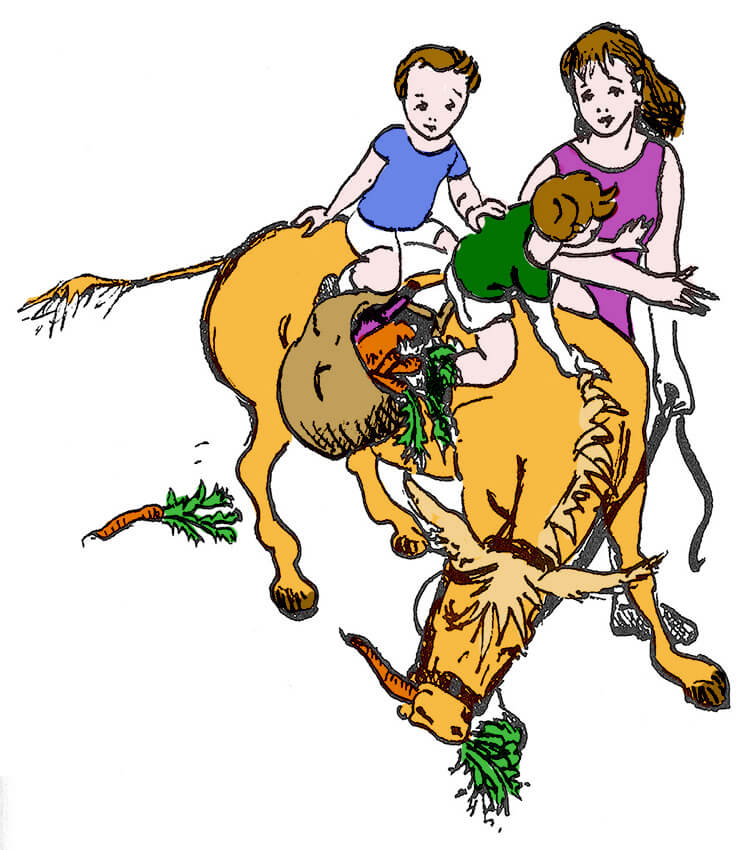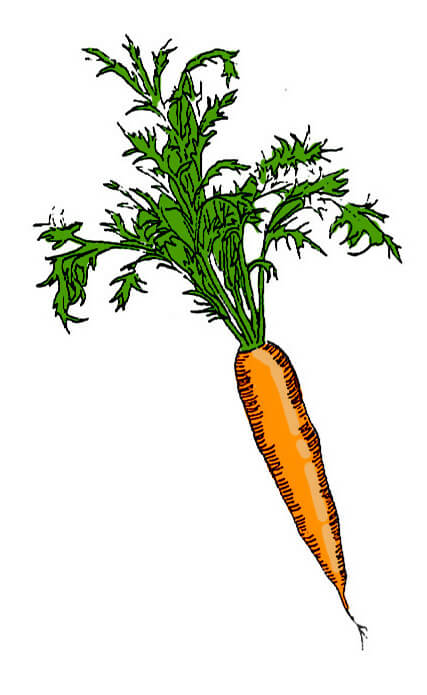Read by Michael Flamel

My eldest stepson came into my life like a whirlwind. He was a wild and beautiful child, never still, always dirty, charming and provocative. He regarded me, with just suspicion, as someone who had diverted the attentions of his father, so he gave me a hard time.
To me, the nervous European “other woman,” he was the embodiment of a spirit I had not encountered before: the bright, inquisitive energy of a new world, a bubbling creativity, sometimes too creative and too ebullient for a very young stepmother of docile English upbringing.
His best weapon was food, for I had had no experience with fussy eaters. My own first son, raised in Italy in a vague, inexperienced way, was used to being dragged to cheap student restaurants and ate everything. Indeed, his first solid food was, if I recall rightly, octopus stewed in tomato sauce (he had seemed interested, so I let him have some). My all-American stepson, though, quickly perceived that I was trying too hard. He wanted food “the way his mother cooked it.”
Anxious to please, I produced one dish after another for him to reject. I was young enough to fear he might starve and it was amazing how long he could go without eating. His cheeks flushed with health, his muscular little body rigid with obstinacy, he could apparently survive for days without food.
Sometimes I suspected he had discovered the secret of human photosynthesis as he tore madly round the yard, his yellow hair glinting in the California sunshine, when he should have been drooping and languishing like a neglected houseplant. But among the few things he would eat were raw carrots and, in retrospect, that may have been his secret after all. In these days of the miracles of beta-carotene, the carrot has come into fashion again.
Beta-carotene (the substance which makes carrots orange) is suggested as a cure for everything from bad eyesight to cancer. The orange pigment helps the body manufacture Vitamin A and, in fact, if one is overly enthusiastic, the excess pigments can tum the skin yellow (a condition known as “carotenemia”). Flamingoes usually get their 8 brilliant plumage from feeding on shrimp but in captivity they have to be fed carotene or they will lose their color. The brighter the carrot, the more carotene it contains.
Modem dieticians ascribe nearly, but not quite, as much power to the carrot as did the ancient gardeners back when gardeners were also apothecaries. In 1577, Thomas Hill (writing under the delightful pseudonym “Didymus Mountaine”) said in The Gardener’s Labyrinth:
“Carrots amend a cold reume, the paine of the stomack, stopping of urine, a chollick a dry cough, the hard fetching of breath, the fluxe of the head, remove winde, heat the stomack, help the stopping of the liver, the vexing of the belly.”
If this were not enough, he adds later that it “removeth the venerall act, procurith Urine, and assugeth the Chollerick, Sendeth downe the Termes in Women, it helpeth the straightnesse of making water, amendeth stitches of the side or plurisies, the bite of venemous beast, it amendeth the eating of Ulcers.” As a last shot, he notes “the wearing of this root is profitable.”

Back in 1577, the bright orange carrot was fairly new. Carrots, which originally came from Afghanistan, were purple or white. About the time of Thomas Hill, Dutch breeders succeeded in producing the orange carrot. It must have been much more appealing than the purple or white varieties, although these continued to be available as late as 1821 when Henry Phillips in the History of Cultivated Vegetables says that white and purple carrots are enjoyed “by those families who are fond of French dishes.” By this time, the carrot’s reputation is slightly less extensive, although he says they “strengthen and fatten the body, and are a very proper food for consumptive persons” ( consumption, like cancer in our time, was the medical nemesis of the nineteenth century). He mainly recommends carrots as animal fodder: “One acre of carrots, if well planted, will fatten a greater number of sheep or bullocks, than three acres of turnips, and the flesh of these animals will be firmer and better tasted.”
When I lived in Italy, our house was on top of a very steep hill and we had to go down to the bottom of it every day to get our groceries. My second and third sons were close in age, and I conceived the idea of getting a donkey to haul them and the groceries up and down the hill. It was one of those ideas which would probably have remained just an idea if I had not lived in a small village in Italy. I mentioned it casually to one of the neighbors, and not long afterwards there was a knock on the door. On the step stood a man with a very tiny donkey covered with fluffy hair. The tufts of fluff on her forehead and tail were decorated with little red satin bows and she was not more than a yard high. Would the Signora like her?
I think a stronger person than I would not have resisted and, as he must have anticipated, I capitulated at once. I murmured that I had no stable, but he quickly pointed out that such a small animal hardly needed a stable. Why, one could almost keep her by the bed. Some of the bangs above her eyes had escaped from the red ribbon and she peered up through them. Could she, I murmured, go in the shed with the chickens? Naturally, the man assured me, this was what she liked most of all, to live with chickens. He quickly departed with his money, and when my husband came home from work, there she was. I had the sense not to remove the ribbons before he saw her.
Hours later, covered with a film of flying feathers and scattered chicken manure, he said, “I suppose I’ll have to build you a stable, but maybe we could have some supper first.” I got supper quickly and did not mention that the man had said she could share our bedroom. After all, he had been wrong about the chicken house.
She was really too young to leave her mother, and I worried about her being properly nourished. Luckily, as always in Italy, everyone was able to give me advice. It appeared that young donkeys thrived best on hard boiled eggs and carrots.
So, this is what she had, and she certainly thrived. Soon she was strong enough to carry the little boys and the groceries up and down the hill. It was more fun than practical because every few yards she would turn her head, pull something out of the grocery bag, and eat it before I could stop her.
She was clever enough to take from the side I was not on or to wait until one of the babies cried and I was diverted. At home, the children tumbled about her legs and she did exactly as she pleased until she went too far and ate the last page of a detective novel I was reading (I never did find out who the murderer was). After that, I grazed her in the olive grove below the house, as she had pretty much graduated from eggs and carrots to grass (and the occasional book or sweater that was lying around).
Thomas Jefferson also talks about carrots as animal fodder. He notes growing carrots “12 inches in diameter.” I thought that must be a misprint but then read in Henry Phillips that Mr. Billing, “an ingenious farmer in Norfolk,” grew carrots that “measured two feet in length and from twelve to fourteen inches round.” He goes on to say that “Cows, sheep, hogs .and horses, become fond of this food; and as they are greatly nourished by them, its culture may be worthy of the attention of those farmers whose lands are suitable to its growth.”
The land needs to be sandy, free of stones, and not “much dunged.” Thomas Hill says, “The seeds of Parsnep and Carot require one manner of diligence in the sowing, and to be bestowed in a grown painfully digged …a nd workmanlike dressed before.”

I suppose the painful digging and the workmanlike dressing is what I don’t do well. My carrots are far from being two feet long. My family seems to prefer the straight, turgid carrots that come from a store wrapped in cellophane to my stunted ones, twisted passionately round each other like grimy illicit lovers, or cunningly cleft like mandrakes. Each year, I think I’ll try raised beds filled with a soft mixture of sandy compost. Somehow the raised beds never get built, but I go on planting carrots anyway. Sometimes I thin them, sometimes I don’t.
If you don’t thin enough, or your ground is too stoney, or your carrots don’t look or taste as good as those from the supermarket, or if they get attacked by pests (there are lots they can succumb to, including their very own “carrot weevil” and “carrot rust fly”), you can always leave them in the ground and pick their flowers the next year. The flower is lacy and lovely like Queen Anne’s lace (to which they are related) and, if allowed to go to seed, will draw together to form a tuft like a bird’s nest,
which is why it was called “bird’s nest” plant in the past.
Ella combe says the name shows that people in the past were “more observant of the habits of plants than we generally give them credit for,” but it also shows that in the past people had to save their o’wn seed and use it.
They also appreciated the beauty of the leaves, which Parkinson (A Garden ·of Pleasant Flowers) says “allureth many Gentle women often times to gather … and stick them in their hats or heads, or pin them on their arms instead of feathers.”
The seeds which are so tricky to plant are covered with a case which “were it not so tiny, might anywhere be mistaken for a hairy little bug” (Vernon Quinn, Seeds and Their Histories), and they, like the seeds of caraway and dill to which they are related, are edible.
In fact, according to Hill, they were given in “disorders of the breast and lungs, in pleurisies, in stranguries, and in the stone and gravels.” We are even assured that a certain gentleman “was free from the attacks of his disorder for several years, by means of an infusion of carrot seeds in clear malt liquor” and that “an infusion of them in white wine is excellent in hysterical complaints.”
That must have been where I went wrong, 30 years ago, with that wild little boy in California. Apart from stranguries, I was certainly near hysterical. If I had only known, I could have drunk an infusion of carrot seeds in liquor or wine. It would have stopped my fussing, and then he would probably have stopped teasing and come to dinner. But it seems at least he was right about eating carrots.
We are good friends these days. He even helps me in the garden sometimes. Next time he comes to stay, though, maybe I should refuse to eat unless he helps me make some raised beds for carrots. ❖


 Previous
Previous


